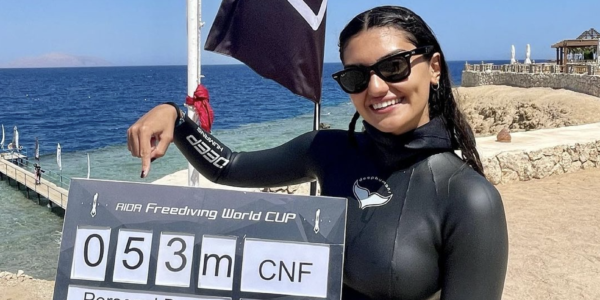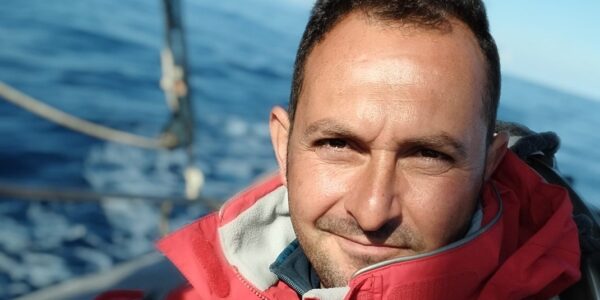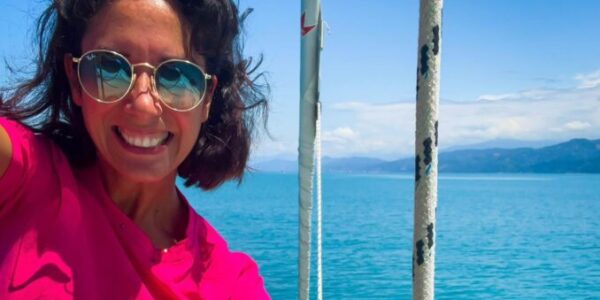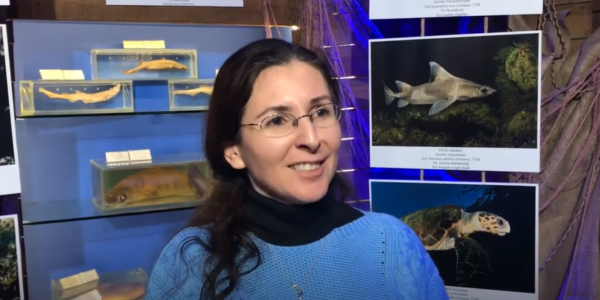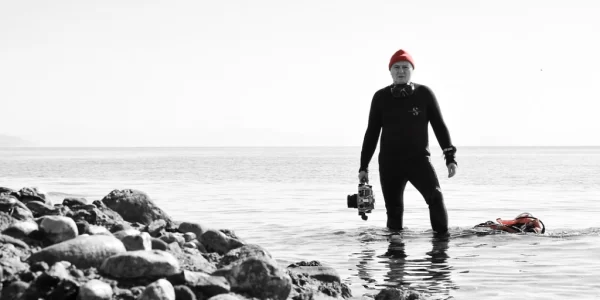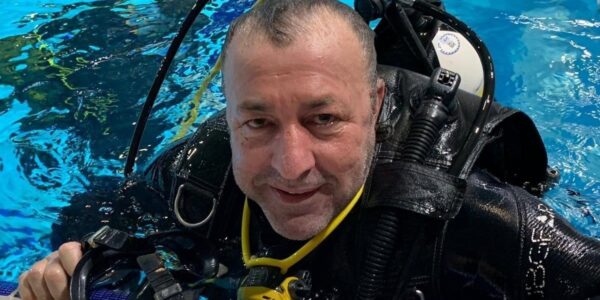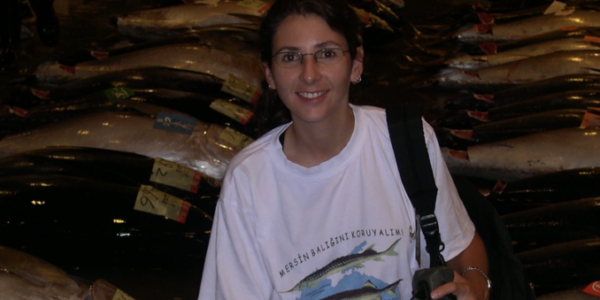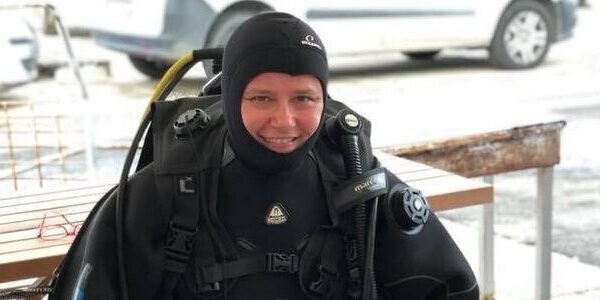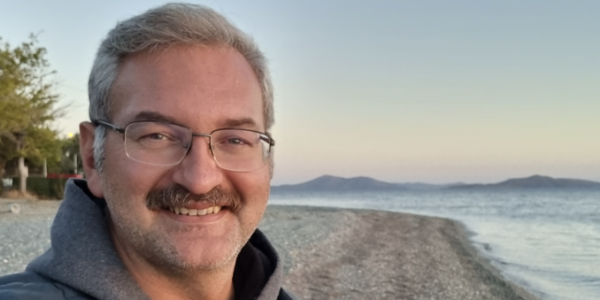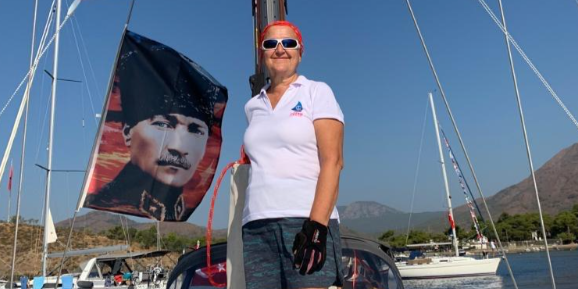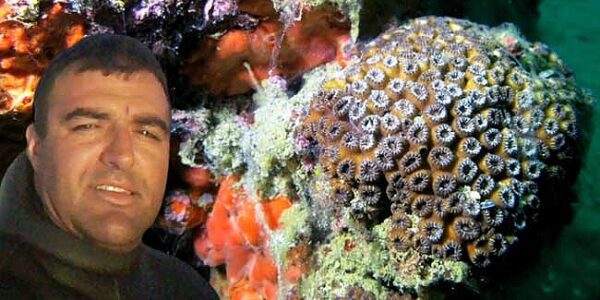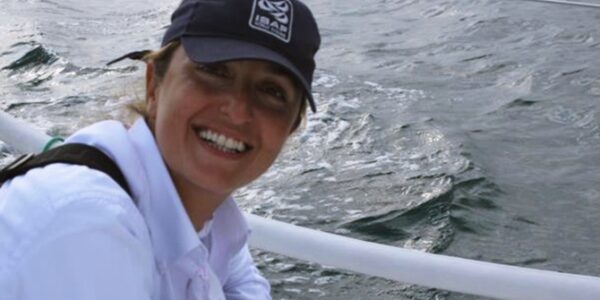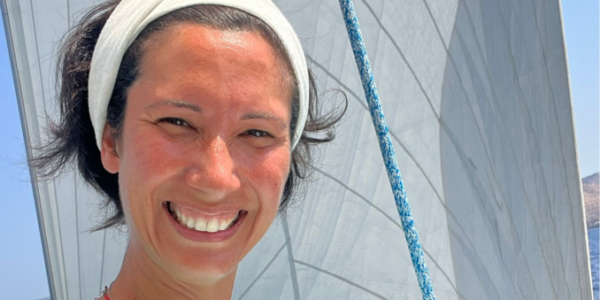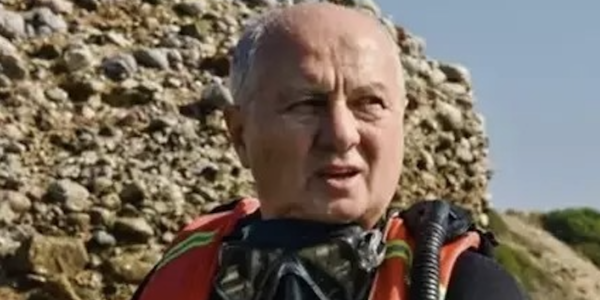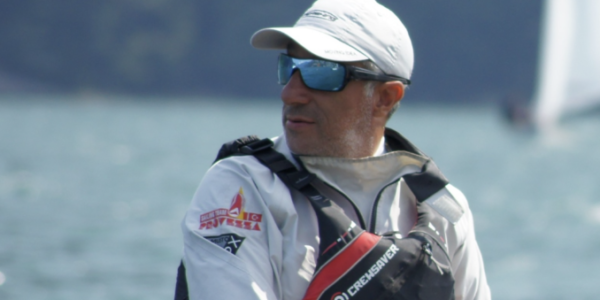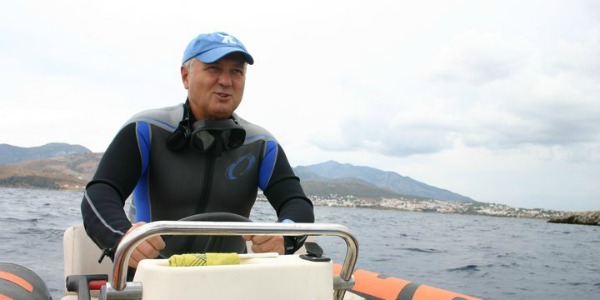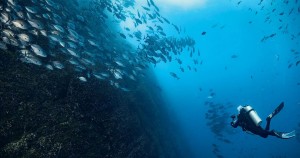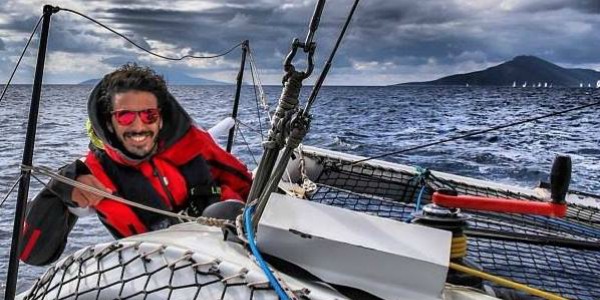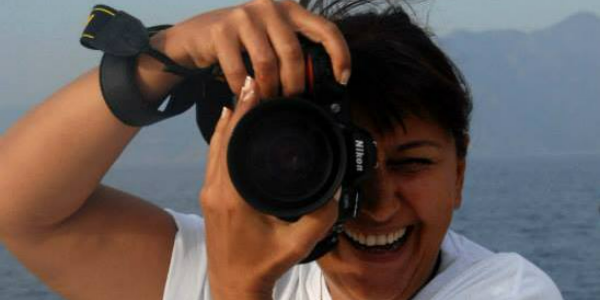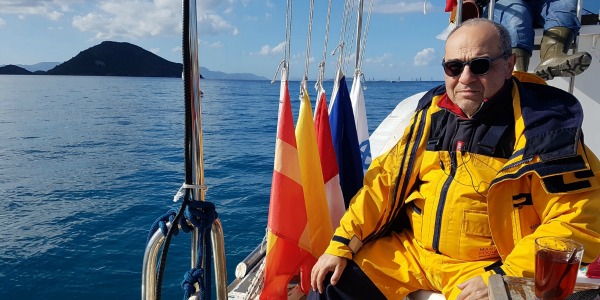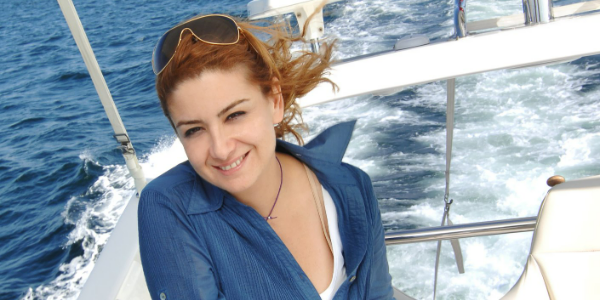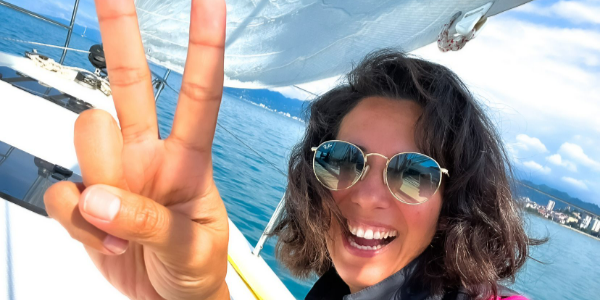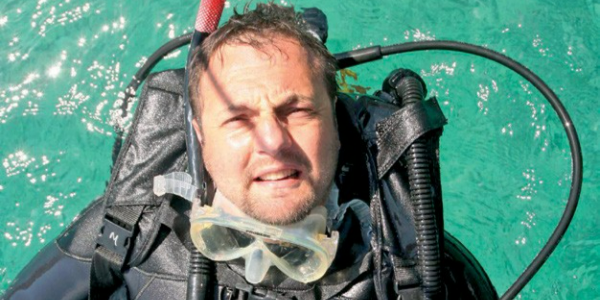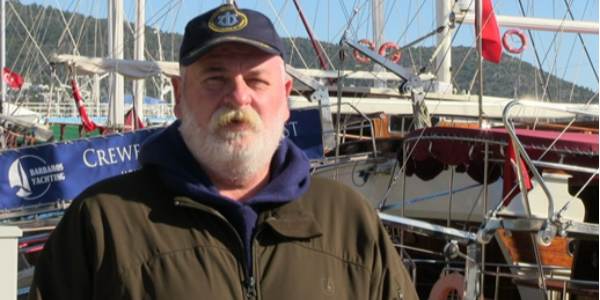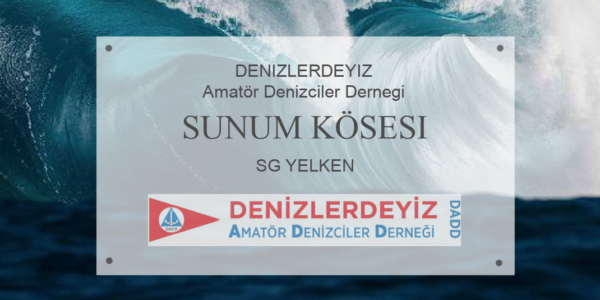Volcanoes have the power both to destroy and create. For those who live on their slopes, an eruption can be terrifying, but volcanoes have also formed much of our landscape. Islands like Hawaii are built by the constant flow of lava, slowly pushing land from the seafloor up. And as divers, we get to see these formations from a unique perspective. All around the world, volcanoes have created the pinnacles, walls and lava tubes of some of our most iconic dives. Here we explore 25 of our favorite volcanic dive sites, from the languid lagoons of South Pacific atolls to the open ocean seamounts of the Mid-Atlantic Ridge.
1 ) Clipperton Atoll
French Territory
Little-known Clipperton Atoll is an oddity given its location in the eastern Pacific. It’s located about 600 miles southeast of Socorro Island, and though it’s closest to Mexico, the barren, uninhabited island is a territory of France. It’s also not technically an atoll, even though it looks like one, because the lagoon is stagnant fresh water rather than seawater. Few divers have visited Clipperton, but the liveaboard Nautilus Explorer has begun offering trips here along with the Socorro Islands. The low-lying island has a barrier reef that drops to about 175 feet deep and is home to an endemic species, the Clipperton angelfish, and sees visits from sharks and rays.
2 ) Fakarava
French Polynesia
Fakarava is the quintessential atoll: A ring of reef topped by white sands and coconut palms, with a lake-calm saltwater lagoon in the volcano’s crater and deep-blue South Pacific waters on the outside. The lagoon is the second largest in the remote Tuamotu Islands of French Polynesia, and the entire atoll is a UNESCO Biosphere Reserve. Divers can hit the water at Tumakohua Pass, a narrow channel connecting the ocean to the lagoon where the tidal exchange creates a screaming-fast, 4-knot drift dive. Divers start in the open sea and swim toward the mouth of the pass, right into a veritable wall of reef sharks that hang out at the mouth of the channel. The flow takes you through the channel, sweeping past vibrant coral walls packed with Napoleon wrasse, before popping you out the other side in the calm waters of the lagoon.
3 ) Turneffe Atoll
Belize
The Caribbean Sea atoll formations in Belize are the only ones in the Western Hemisphere, but they didn’t form around volcanic islands like those in the Pacific. These unique atolls are karst limestone structures shaped by the rise and fall of sea levels during the last ice age. The result was a handful of atoll-like structures like Turneffe Atoll, which comprises numerous small islands around a shallow lagoon, with steep drop-offs on the outside. Turneffe Atoll sits in the open ocean, on the outer edge of the Mesoamerican Barrier Reef, where large pelagics such as jacks cruise in from deeper water. At its current-swept southern tip, the Elbow is a favorite wall dive, where divers can find seasonal aggregations of snapper and grouper. And throughout the protected atoll, divers enjoy encounters with turtles, rays and eels.
4 ) Ari Atoll
Maldives
The entire Maldives island chain is perched atop the peaks of submarine volcanoes in the Chagos-Laccadive Ridge, which stretches north to south across the Indian Ocean. These volcanic peaks accumulated coral reefs around their shores, then slowly eroded away, leaving a chain of atolls behind. The abundant reef structures and remote ocean location make the Maldives one of the most sought-after diving destinations in the world. And Ari Atoll — one of the country’s 26 natural atolls — is a great place to start. It comprises dozens of small islands with numerous distinct reefs creating bommies, pinnacles and barrier formations where divers can find a multitude of big animals, including manta rays and whale sharks. “Ari Atoll has some of the greatest channel dives; there are frequent shark and big-fish sightings,” says Angela Gitaprasaka, dive manager for the Four Seasons Resort Maldives. “Some of the underwater pinnacles there are flourishing with soft corals and an abundance of fish, though strong currents can make the dives challenging.”
5 ) Tubbataha
Philippines
The remote Tubbataha Reefs in the Philippines’ Sulu Sea are true atolls, formerly the peaks of volcanoes along the undersea Cagayan Ridge. The Tubbataha region is both a national park and a UNESCO World Heritage Site, accessible only by liveaboard during the March-to-June dive season. Diving at Tubbataha offers a vast buffet of everything the Coral Triangle has to offer, from steep walls and bluewater dives with sharks and schooling barracuda to shipwrecks and macro diving with tiny critters like pygmy seahorses and ghost pipefish. At the renowned Shark Airport dive site, on the North Atoll, a shallow plateau drops into the blue at 80 feet, where whitetip reef sharks cruise the ledge among jacks, rainbow runners and sea turtles. And lava formations dominate the scenery at Black Rock, with huge Napoleon wrasse poking around for crabs and sea urchins.
6 ) Bikini Atoll
Marshall Islands
Bikini Atoll’s name recognition comes not from its pristine reefs but from the United States using the island for nuclear-bomb testing, along with the Castle Bravo hydrogen-bomb test. Bikini Atoll’s remote location and the deep-water lagoon inside the atoll made it an ideal spot to test the effects of these bombs on warships. And to this day, the lagoon holds a stunning collection of wreck dives, including the aircraft carrier USS Saratoga and the Japanese battleship HIJMS Nagato. It was only in 1996 that the radiation levels dropped enough to allow divers to finally visit these wrecks.
7 ) Scott’s Head
Dominica
The island of Dominica is part of the Lesser Antilles, a north-to-south chain of volcanoes that marks the eastern edge of the Caribbean. And the “Nature Island” has plenty of geothermal activity — including its famous mountain lake that boils and steams within the rainforest — and dive sites that bubble as volcanic gases escape from the seafloor. Of all Dominica’s dive sites, Scott’s Head Pinnacle is one of its most famous, a spire along the edge of the undersea caldera that forms Soufriere Bay on the island’s southwestern end. The dive often starts at a spot called Swiss Cheese — named for its caves filled with soldierfish — then crosses a saddle to the pinnacle, which is packed with sponges and gorgonians where you can find sea horses, frogfish and turtles.
8 ) Eye of the Needle
Saba
The volcanic origin of the tiny Caribbean island of Saba is quickly apparent above and below the water, with sheer rock cliffs plunging into deep blue waters, creating stellar undersea walls alongside an underwater playground of peaks and spires. The decades-old Saba Marine Park rings the entire island, reaches to a depth of 200 feet and encompasses about 30 dive sites, many of which feature dramatic vertical walls and open-ocean pinnacles. One of Saba’s most impressive pinnacles is the Eye of the Needle, a rocky spire that peaks 90 feet underwater. To reach it, divers drop down at the site Third Encounter. “Just a few kick cycles from the Third Encounter plateau, the Needle emerges from the blue,” says Lynn Costenaro of Sea Saba Dive Center. “Every inch is covered with life — sponges, corals, juvenile spotted drum, burrowing eels, banded coral shrimp and perhaps a resident turtle.”
9 ) Sisters Rocks
Tobago
Just outside Tobago’s picturesque Bloody Bay, Sisters Rocks are five rocky islets that rise from about 200 feet, breaking the surface like shark’s fins above the blue water. The area is divided into two sections for divers, the Inner and Outer Sisters, with sheer rock faces on the outer sides. This collection of pillars is swept by currents, making them one of the few places in the Caribbean where divers can enjoy frequent encounters with big animals such as manta rays, hammerheads and whale sharks. The rocky terrain also offers ample hiding places for smaller creatures such as lobsters, crabs and octopuses, and you can also spot beautiful reef species like the flameback angelfish among the swaying sea fans and gorgonians.
10 ) Watu Balu
Indonesia
In the remote East of Flores region of Indonesia, volcanic formations dominate the scenery, including the highly active peak of Komba Island (page 58). Near Rusa Island, there’s a small rocky islet that can be pummeled by strong currents, but the reward is staggeringly rich reefs feeding from the strong flow. Named Watu Balu, this rock seems nondescript at the surface, but slip below and you’re immediately greeted by massive swarms of anthias. There’s something for every diver on this pinnacle, from the tiniest macro critters, such as nudibranchs and anemone shrimp, to big animals, such as sharks, tuna and mola mola, cruising the blue water. Look for frogfish — master ambush predators camouflaged among the corals — and sea kraits, a type of venomous sea snake.
11 ) Maaya Thila
Maldives
The underwater terrain of the Maldives is so varied that there are local names for the different types of formations divers will find. A thila is an undersea pinnacle that sits completely below the surface of the water, while a giri is a pinnacle that rises to the surface, and a faru is a small atoll that extends above the surface. Thilas are often exposed to strong currents, offering great chances to spot big animals cruising by in the open ocean. One of the most renowned thilas in the Maldives is Maaya Thila, located near Ari Atoll. This pinnacle rises to about 30 feet below the surface of the water, where brilliantly colored coral gardens wave in the currents. Overhangs and swim-throughs pockmark the sides, creating a stepped formation with ledges and varying depths. Sharks are regular visitors here, including gray reef sharks and elusive oceanic whitetips.
12 ) Steve’s Bommie
Australia
Steve’s Bommie is an iconic Great Barrier Reef bommie in the Ribbon Reefs, north of Cairns. This isolated pinnacle rises from 100 feet to 15 feet below the surface, and it attracts an abundance of both large fish and small macro species. Sharp-eyed divers can look for ornate critters like glittering pipefish, clownfish in their anemone homes and a wide array of colorful nudibranchs. Also keep an eye out for wobbegong sharks. These ambush predators have tassels on their faces to help them blend among the rocks and seaweeds. Divers can make a circular dive around the bommie. Start by descending to the bases, where you can see the memorial plaque to “Steve” embedded in the reef. Then make a slow spiral upward, exploring cracks and crevices while circumnavigating the bommie. Cap off the dive with a safety stop amid the coral gardens at the top of the bommie.
13 ) Daedalus Reef
Red Sea
Like the Sea of Cortez, the Red Sea is a rift zone, this one between the African and Arabian tectonic plates. As these plates drift apart, slowly widening the space between them, they allow volcanic activity to arise from within Earth’s crust, forming islands along the fault. This is how open-ocean seamounts like Daedalus Reef arose in the deep waters of the Red Sea. It was likely a small island that amassed coral around its shores as the top eroded below the waterline. Today, it’s an oasis of coral rising from the depths where divers can drift along seemingly bottomless walls. Pristine technicolor corals stretch their arms into clear blue waters where large pelagics roam. It’s possible to spot anything from manta rays to thresher sharks at this bluewater outpost, but Daedalus is perhaps most renowned for frequent encounters with barrel-chested oceanic whitetips flanked by their entourages of convict-striped pilot fish.
14 ) Gordo Banks
Baja, Mexico
The entire Baja Peninsula is geologic history written into the land. Once part of mainland Mexico, it split off as the Pacific and North American plates spread apart along the same tectonic boundary that includes the San Andreas Fault. The resulting rift caused volcanic activity — part of the Ring of Fire that runs around the Pacific — creating a dramatic underwater landscape of canyons and seamounts. Among these are the Gordo Banks, which lie just off the tip of the peninsula. These seamounts rise from thousands of feet to just within recreational diving depths. The shallowest point on the banks is 125 feet, so this is open ocean, bluewater diving for advanced divers — you make a descent, and the seamount slowly becomes visible around 60 feet. Any divers lucky enough to drop in on these deep peaks might find themselves finning alongside schooling hammerheads and congregations of mobula rays, as well as fish such as tuna and marlin.
15 ) Roca Partida
Socorros
The Revillagigedo Islands, also called the Socorros, are four volcanic islands 240 miles southwest of Cabo San Lucas, Mexico. They’re also a big-animal lover’s dream destination. The region is still volcanically active: San Benedicto had a major eruption in 1952, and an underwater eruption happened in the 1990s. But for divers, some of the best action happens around the seamount Roca Partida. The tip of the underwater peak rises just above the water’s surface, and at recreational diving depths it’s possible to circumnavigate the rock in a single dive. But you’ll never get bored watching the endless parade of pelagic species, including hammerheads, Galapagos sharks, schools of tuna, and pods of bottlenose dolphins. It’s not out of the question to see whale sharks or orcas, and during the winter season, divers may even spot humpback whales cruising around.
16 ) Hin Daeng
Thailand
In the Andaman Sea, accessible by liveaboards and day boats from Phuket, Thailand, the Hin Daeng seamount is visible from the boat, its rocky peak breaking the surface of the water and its base resting about 230 feet down. The name means “red rock,” and it serves as an open-ocean gathering spot for big animals. Jacks and barracuda swirl around the soft-coral-covered walls, where reef fish frolic en masse among sea fans and anemone gardens. Don’t spend all your time looking down at the reef, however, because manta rays and whale sharks frequently swoop in, buzzing the seamount like bomber planes. Hin Daeng also has a sister site, a pinnacle called Hin Muang, known for blankets of purple corals on its walls.
17 ) South Emma Seamount
Papua New Guinea
Sitting within the biodiversity-blessed Coral Triangle and along the Pacific Ring of Fire, Papua New Guinea offers the best of both worlds, with dramatic underwater formations that are blanketed by the world’s greatest biodiversity of coral and marine-life species. And of PNG’s myriad underwater hot spots, the South Emma Seamount, in New Britain Island’s Kimbe Bay, is arguably among the best. This open-ocean seamount is accessible both by day and liveaboard boats from the Walindi Plantation Resort. The top of the seamount reaches about 40 feet deep, where batfish swim in formation. Cruising around the perimeter, divers can find their fill of everything from schooling jacks and reef sharks, to mind-bending critters like the legume-size pygmy seahorses that cling to gorgonians and psychedelic nudibranchs.
18 ) Princess Alice Bank
Azores
The volcanic Azores sit on the Mid-Atlantic Ridge, the longest mountain range in the world, which runs along the seam that separates the North American and Eurasian tectonic plates. These cracks in Earth’s crust are sites of constant volcanic activity as the plates move away from each other, creating cracks in the seafloor where magma pushes up and forms a long line of mountains. A three-hour boat ride from Pico Island takes divers to an underwater mountaintop called the Princess Alice Bank, which rises from 8,000 feet deep to about 100 feet at the shallowest point. Called the “meeting place of the mobula rays,” the Princess Alice Bank is renowned for congregations of Atlantic manta rays, which flock to the banks to feed on the upwellings of nutrients brought by oceanic currents. Divers can also hang midwater to swim in the blue with schooling tuna, marlin, dolphins and sharks.
19 ) Barren Island
Andaman Islands
Beneath the clear blue water around this active volcano in the Andaman Sea are vibrant, coral-laced walls alongside fields of black volcanic sand and freshly formed lava rock. The island rises from the open ocean, topped by a smoldering volcano and ringed by dramatic formations. Divers can explore a lava rock cavern at the dive site Purple Haze, while Manta Point has a current-swept precipice that hosts cleaning stations for traveling manta rays. Liveaboards to Barren Island operate from Port Blair on South Andaman Island.
20 ) Batu Tara Volcano
Indonesia
Motoring to the remote Komba Island, in Indonesia’s newest frontier of diving east of Flores Island, intrepid divers can witness the smoke and pyrotechnic displays of Batu Tara, a stratovolcano that has frequent bursts of geothermal activity. These topside displays are mesmerizing, but the view underwater is equally stunning, with profusions of soft corals, schools of fish such as barracuda and dogtooth tuna, and a healthy collection of macro critters. The region is renowned for oddities like frogfish, mimic octopuses and seahorses hidden among brilliantly colored fans and soft corals.
21 ) Mahengetang Banua Wuhu
Indonesia
For a truly special — and unusual — diving experience, look to Indonesia’s Banua Wuhu, off Mahengetang Island near North Sulawesi. Unlike many other volcano dive sites, Banua Wuhu lies completely underwater, with its sulphur-covered peak rising to about 20 feet below the surface. The rocky substrate bubbles with the gases released by geothermal activity below, and the water temperature hovers at roughly 100 degrees around the volcano, creating an experience akin to scuba diving in warm Champagne.
22 ) Molokini Crater
Maui
One of the most popular diving and snorkeling spots in Hawaii is the volcanic cinder cone off South Maui called Molokini. This crater was created by the same hot spot that formed the island of Maui. Over the eons since it was formed, the north side of the crater eroded, leaving a crescent-shaped island that nurtures shallow reefs on the inside, and a dramatic 300-foot submarine wall on the backside. These shallow reefs are filled with fish such as the endemic banded angelfish. The back wall offers opportunities to spot pelagics, such as manta rays and humpback whales, cruising the Alalakeiki Channel.
23 ) Garove Island
Papua New Guinea
In Papua New Guinea’s Vitu Islands, a collection of volcanic peaks north of New Britain, liveaboard boats can sail into the caldera of Garove Island’s volcano, a near-perfect circle at the heart of the island that is nearly 1,000 feet underwater at its center. The black volcanic-sand seafloor inside the caldera makes it one of PNG’s legendary spots for muck diving. Underwater photographers scour these sandy sites looking for alienlike critters, from leaf scorpionfish to blue-ribbon eels. Dive sites like Dicky’s Place offer long bottom times and enough surprises for multiple dives, especially at night when a new cast of critters emerges.
24 ) Gordon Rocks
Galapagos
The Galapagos Islands were formed by volcanoes, and the famed Gordon Rocks dive site was a volcanic cone that arose to the east of Santa Cruz Island, its caldera eroding away with eons of wind and wave action. Today, you can make out a faint crescent shape from the air, but at boat level it looks like three rocks protruding from the water. The channel between the north and south rocks passes over the caldera, creating a shallow area with heavy surge. Around the edges, the seamount drops into the depths. It’s here you’ll find the star attraction: massive schools of hammerhead sharks sweeping across the blue backdrop like squadrons of fighter jets. It’s also a good spot for rays, Galapagos sharks and schooling barracuda.
25 ) Superman’s Flight
St. Lucia
Enjoy a powerful drift dive in the shadow of one of the Caribbean’s most iconic volcanoes. Superman’s Flight lies just offshore at the base of Petit Piton. The sloping wall is the underwater extension of the volcano’s flank, extending more than 1,000 feet underwater. Situated at the westernmost point of the mountain, the site is buffeted by strong currents, giving divers a thrilling ride as they sweep past immense barrel sponges and filter-feeding corals.
